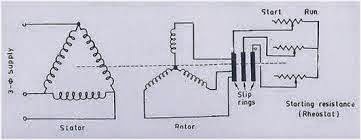Single phase and Three phase formula's used in electrical engineering
Electrical Formulas Electrical engineering required certain formula which must be known for an electrical engineer and even a non engineer person so to know certain parameters of appliances around everyone. Lets discuss 1 st about basic parameters used in electrical systems:- I = Amperes E = Volts kW = Kilowatts kVA = Kilo volt-Amperes HP = Horsepower % eff . = Percent Efficiency pf = Power Factor For Single-Phase load here are the formula’s as below:- TO FIND:- § Amperes when kVA is known –> I = kVA x 1000 / E § Amperes when horsepower is known –> ( HP x 746) / ( E x % eff. x pf ) § Amperes when kilowatts are known –> ( kW x 1000 ) / ( E x pf ) § Kilowatts –> ( I x E x pf ) /1000 § Kilovolt-Amperes –> ( I x E ) ...




